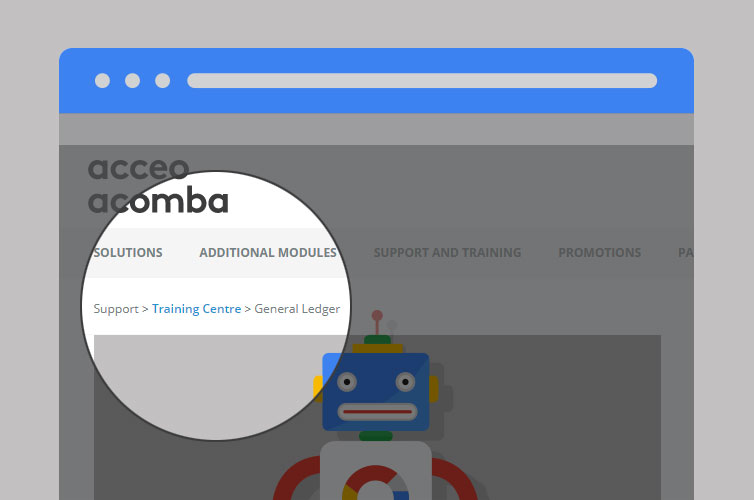Six SEO Tactics
to Make
your Online
Business
Stand Out
This article was produced in collaboration with experts from k-eCommerce. With more than 1500 sites deployed and 15 years of experience, k-eCommerce is a leader in integrated e-commerce solutions. To read more blog content from k-eCommerce, check out their blog!
If you want your online business to show up ahead of the competition on Google, you’re going to need search engine optimization.
The good news?
SEO isn’t luck or guesswork. It begins with the way you build your site. And a modern eCommerce solution makes it even easier by taking coding out of the equation and letting you create search-engine optimized content directly through your content management system.
In other words, it’s not as complex as it seems… once you’ve got a handle on the basics.
So, to get you started, let’s take a look at some of the major SEO elements you need to consider when building your web store.
01Page Title
The page title is just that: the title text that you see at the very top of your browser window.
It’s also the text you’ll see when the page appears in a search engine results page (SERP for short); which means it’s a critical component of your SEO.
Google displays the first 70 characters of a page title. So, when naming your page, give a thought to what you want your customers to see in search results. You should also take care not to duplicate page titles or incorporate irrelevant terms that could negatively affect your results.
02Meta Keywords
In general, keywords are words your clients use during their online search. These terms might be products (hiking boots), special offers (shoes for a dollar), or even a description of your site (online shoe store).
Meta keywords, then, are elements of a page that tell search engines about the content of the page. So you might use hiking boots on a product page, shoes for a dollar on a promotion page, and online shoe store for your home page.
These keywords are distinct from page content like product descriptions. While page content may also contain keywords, visitors to your site do not see the meta keywords.
03Meta Description
Like meta keywords, the meta description tells web crawlers about the content of the page. As the name implies, it’s a concise description of the page’s contents.
The meta description is more important to advanced SEO than meta keywords. Google in particular no longer crawls meta keywords but does crawl the meta description.
Also, unlike meta keywords, visitors can see meta descriptions from the SERP. As such, meta descriptions should be given the same consideration as other visible content when writing them.
While there is no restriction as to the length, most search engines only look at the first 160 characters.
04Breadcrumb
A breadcrumb is a navigation tool. You’ll usually see it at or near the top of the page, where visitors can click through to any of the preceding pages without having to hit the back button:

Aside from being convenient for your clients, the breadcrumb plays an important role in providing information about the page to search engines. Breadcrumbs are usually generated from page titles, but some eCommerce solutions provide breadcrumb tools that let you customize and fine-tune the text even further.
05Canonical Pages
Google hates duplicate content. Years ago, website owners could manipulate search engine results by heavily reproducing keyword-rich pages, so search engines began penalizing sites that did this.
But often there is a legitimate reason for having duplicate content. For instance, you might have a disclaimer that you want to appear on several of your site’s pages.
When you have similar content in more than one place, you can set one of the page URLs as canonical. Doing so tells the search engine that this page takes precedence over the others, letting you sidestep the problem of duplicate content.
06Robots.txt
Sometimes you might not want certain pages getting picked up by search engines.

There’s a text file called robots.txt in the top-level directory of your web server. You can use this file to tell web crawlers to disregard specific pages when crawling your site. You can also restrict specific crawlers (for example, if you want a page indexed by Google but not Yahoo).
However, be aware that robots.txt is only protocol. It can’t actually force web crawlers to comply. While this is not typically an issue with search engines, it provides no protection against malicious bots.
Remember, most if not all of these components can be configured easily through the content management system of a good eCommerce solution. With just a little work, your web store’s Google ranking will be climbing in no time!
Ready to talk with an eCommerce specialist about implementing these strategies for your web store? Give us a call and let's talk about your project.
k-eCommerce is an innovative B2B and B2C eCommerce platform that integrates to Acomba. It allows you to simplify and accelerate your organization’s ability to sell online by pulling pricing, inventory, product information and more from your ERP and displaying it on your online store. k-eCommerce serves organizations in the manufacturing, wholesale and distribution, and retail industries. Contact us today and discover how our eCommerce solutions can help your business grow.

The Acomba blog is brimming with articles on business, IT and business management.
Subscribe so you don’t miss a thing!

I am already subscribed